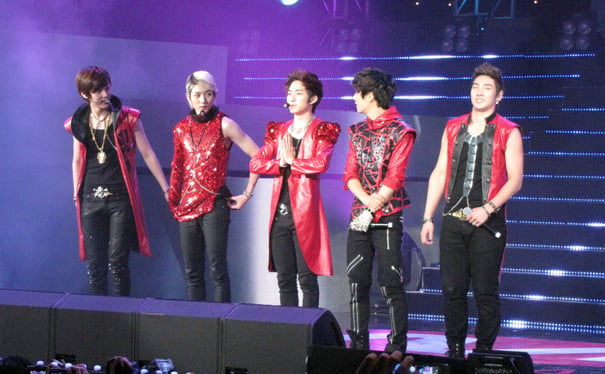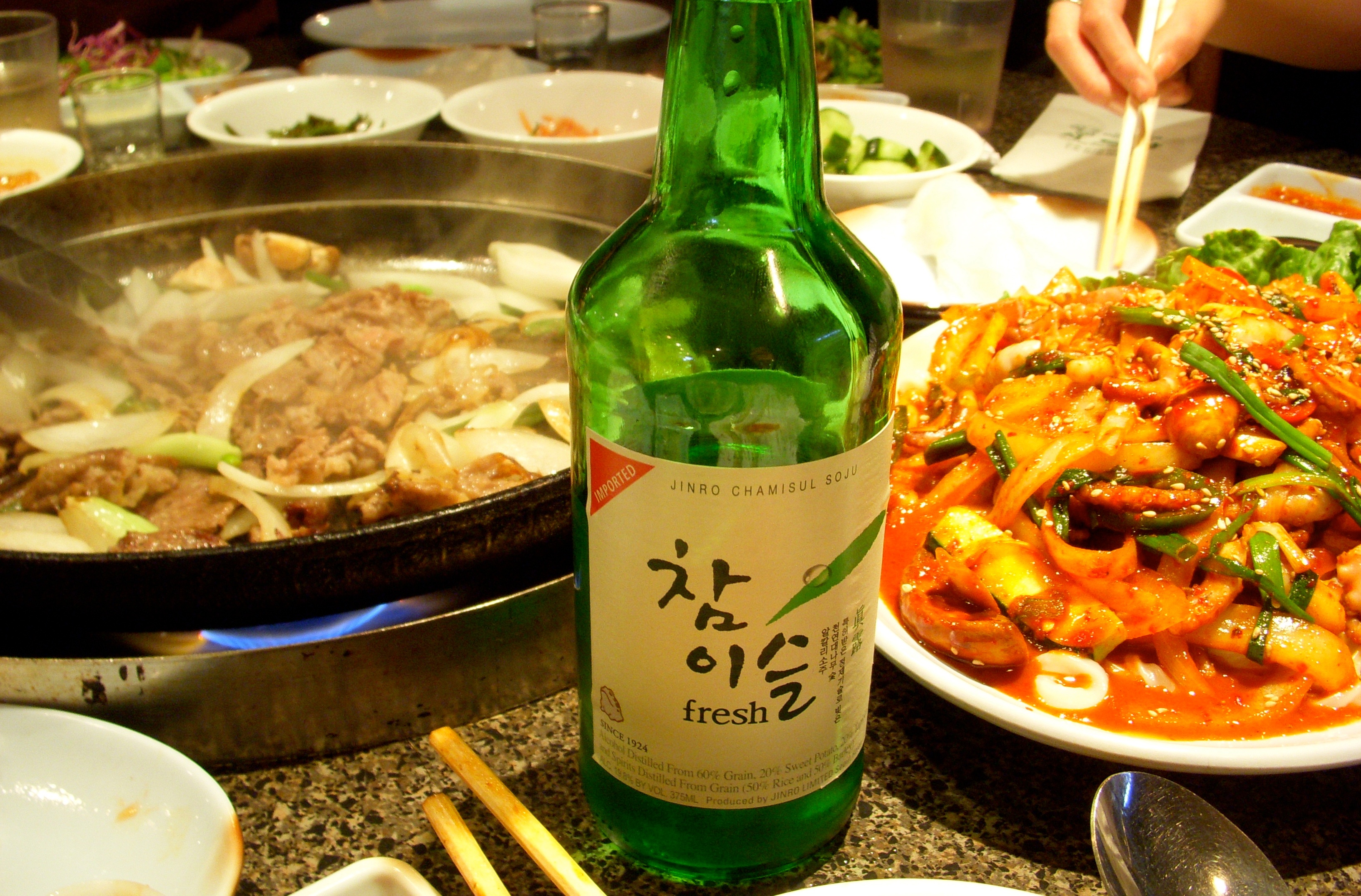What is the best-selling alcohol in the world? Take a guess. Vodka? Rum? Wrong. It’s Soju.
The Korean made, distilled grain alcohol absolutely dominates Asian alcohol sales—one brand sells up to 170,000 bottles per day in South Korea alone. While only 5% of Soju’s global sales are made in the US, various manufacturers are making pushes into urban areas like New York and Los Angeles with designs to expand outside predominately Asian- and Korean-American communities.
These manufacturers hope that a confluence of three factors— the introduction of flavored varieties, the rise of Korean popular culture in the United States, and local alcohol laws—will help them in this endeavor, making Soju in the US as popular as it is globally.
Taste Makers
There are two major Soju manufacturers, Jinro and Chum-Churm. Jinro is the best-selling alcohol brand in the world; ChumChurm is the seventh.
Both brands cost roughly $4 per bottle and, starting in 2013, began producing flavored varieties ranging from lychee to citrus and even rose. This was instrumental to Soju’s Asian ascent—though popular in South Korea, Soju’s standard flavor has been generously described as “tast[ing] like cleaning solvent.” The new flavors broadened its base, particularly among Japanese and Chinese women. In some locations, they had to actually ration the number of bottles consumers could purchase per day.
Soju manufacturers are now looking to US markets, hoping flavored varieties will fit into a drinking culture that already prizes flavored whiskies and vodkas. The US launch has initially focused on communities with heavy Korean-American populations, but also looks to reach beyond such enclaves.
K-Pop, Not Just for Koreans?
The increasing popularity of Korean culture in the United States will help them in this endeavor. From Kimchi and Korean BBQ to K-Pop and one of the most viral songs of recent memory, Korean popular culture is indeed having a moment. And not just among Koreans.
“The Korean culture is now becoming the hip culture,” said Patty Kang, who runs Jinro America’s advertising strategy. She describes going to a K-Pop concert recently where, “There were about 20,000 screaming teenagers, and I would say that about 80% of them were non-Korean.”

Hoping to capitalize on this expanding popularity, Jinro recently partnered with the Los Angeles Dodgers to sell flavored Soju (in bottles adorned with Psy’s face nonetheless) at home games. Jinro billboards now adorn downtown Los Angeles, and not just in Koreatown. The broadened base of K-Pop enthusiasts, manufacturers hope, will also broaden their customer base.
A Lucky Legal Loophole
It’s not just a cultural connection that will drive Soju, however—it is already found in many US restaurants due to an early stroke of genius. In several states—most notably California—manufacturers, pointing at Soju’s relatively low alcohol content, convinced regulators that, despite being distilled, the import was more akin to wine than whiskey. Classified as a rice wine, it can be legally sold in establishments that are designated wine and beer only.
This obviously broadens Soju’s base, making it accessible in restaurants unwilling or unable to pay the roughly $12,000 fee for a full liquor license. Often these are independent, family-owned, ethnic restaurants, meaning Soju can accompany Asian ethnic cuisine domestically as it does abroad.
But it’s not just Asian restaurants getting in on the act; restaurant owners are wising up to the fact that in Soju they have found a savvy loophole: despite the veneer of temperance that a 20% alcohol-by-volume (ABV) beverage suggests, it rarely works out this way in practice. Consider the screwdriver. At a full bar, the barkeep would combine one shot (2.5 ounces) of Vodka—40% ABV—with ice, and fill the remainder of the glass with orange juice. At exactly half of Vodka’s alcohol content, it’s not hard to figure out how to adapt this recipe for Soju: double it. Two shots Soju, some ice, and fill in the rest with concentrated orange juice and—bingo!—a Soju Screwdriver. Now consider how a wise operator could create some truly crafty cocktails with the neutral and flavored varieties and you can start to see the possibilities this legal peculiarity signals.
So while Soju, and Korean culture more broadly, are undeniably having a moment, that’s not all Soju has going for it. “It’s absolutely a business decision,” said one Los Angeles-area restaurant owner currently serving Soju. “It’s either have an alternative for your customers who want a different kind of a beverage, or not be able to serve them.” More neutrally flavored and stronger than beer and wine alike, it is an ideal mixing agent. For cocktails, and perhaps, culture as well.


